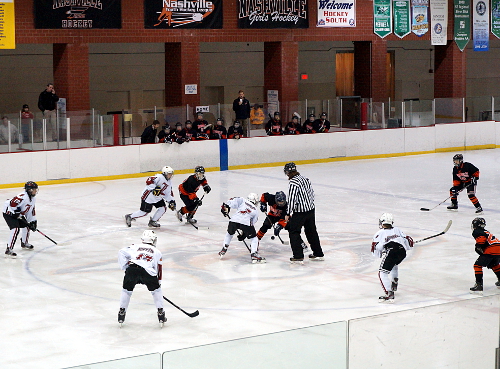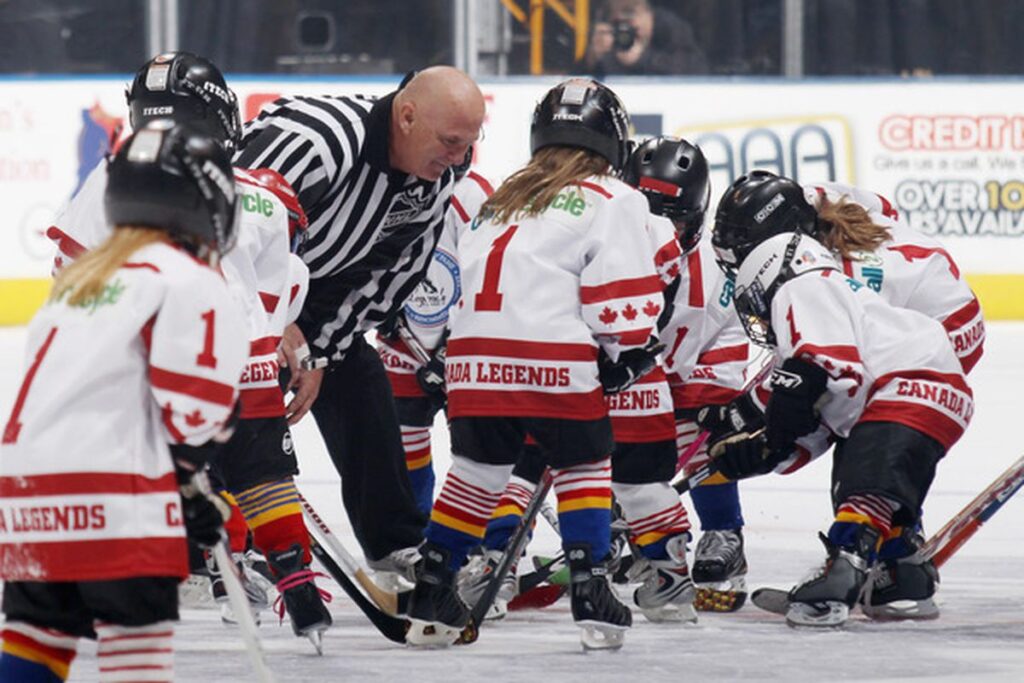Youth hockey games typically last between 60 to 90 minutes. This includes three periods of 15 to 20 minutes each.
Youth hockey is a fast-paced and exciting sport. Games are structured to ensure young players get ample playtime and rest. Each game usually consists of three periods, which helps maintain high energy levels and competitive spirit. The duration can vary based on the age group and league rules.
Parents and coaches appreciate the balanced format, as it allows for skill development and enjoyment. Young athletes benefit from the structured play, learning teamwork and discipline. The game length is ideal for keeping kids engaged without causing fatigue. Youth hockey games provide a perfect blend of fun and learning.
Game Structure
Understanding the game structure of youth hockey is essential. It helps in managing time and expectations. Youth hockey games have a specific format. This includes periods, breaks, and potential overtime. Each part of the game has its own rules and timing.
Periods And Breaks
Youth hockey games are divided into three periods. Each period is usually 12 to 20 minutes long. The length can vary based on the league or age group. Between each period, there are short breaks. These breaks typically last for 1 to 2 minutes. They allow players to rest and hydrate. The breaks are also used to clean the ice surface.
| Age Group | Period Length | Break Length |
|---|---|---|
| Under 8 | 12 minutes | 1 minute |
| Under 10 | 15 minutes | 1.5 minutes |
| Under 12 | 20 minutes | 2 minutes |
Overtime Rules
If the game is tied at the end of the third period, overtime may be played. Overtime rules can vary. Some leagues play a 5-minute overtime period. Others might go straight to a shootout. In a shootout, players take turns trying to score. The team with the most goals wins.
- 5-minute sudden death overtime
- Shootout if still tied after overtime
Overtime adds excitement to the game. It provides a chance for teams to break the tie.

Credit: www.nashville.gov
Age Group Variations
Understanding the length of youth hockey games can be confusing. Different age groups have different game durations. These variations ensure each age group gets the best experience. Let’s explore the different age group variations.
Mite And Squirt Levels
Mite (ages 8 and under) games are usually the shortest. Games typically last about 45 minutes. This includes three 12-minute periods. Sometimes, they play cross-ice games. These games are even shorter.
Squirt (ages 9-10) games are a bit longer. They often last about 60 minutes. They have three 15-minute periods. These games are usually full-ice, giving kids more space to play.
Peewee And Bantam Levels
Peewee (ages 11-12) games get more competitive. Games can last 75 minutes. They include three 15-minute periods with a running clock. This means the clock stops less often.
Bantam (ages 13-14) games are even longer. They often last 90 minutes. These games have three 17-minute periods. The intensity and skill level are higher at this stage.
| Age Group | Game Duration | Period Length | Game Type |
|---|---|---|---|
| Mite | 45 minutes | 12 minutes | Cross-ice or full-ice |
| Squirt | 60 minutes | 15 minutes | Full-ice |
| Peewee | 75 minutes | 15 minutes | Full-ice |
| Bantam | 90 minutes | 17 minutes | Full-ice |
Typical Game Duration
Understanding the typical game duration of youth hockey games is important for parents and players. These games are structured to keep young athletes engaged and safe. Let’s break down the key elements that determine how long these games last.
Average Time On Ice
Youth hockey games usually last about 60 minutes. This includes three periods, each lasting 12 to 20 minutes. The exact time can vary based on the age group. Here’s a simple breakdown:
| Age Group | Period Length | Total Game Time |
|---|---|---|
| 8 and Under | 12 minutes | 36 minutes |
| 9-10 Years | 15 minutes | 45 minutes |
| 11-12 Years | 15-20 minutes | 45-60 minutes |
| 13-14 Years | 17-20 minutes | 51-60 minutes |
Factors Affecting Game Length
Several factors can affect the actual length of a youth hockey game. These include:
- Stoppages in Play: Penalties, injuries, and timeouts can extend the game.
- Ice Resurfacing: Some rinks resurface the ice between periods, adding time.
- Overtime: Tied games may go into overtime, adding extra minutes.
- Age Group Rules: Different age groups may follow different timing rules.
Understanding these factors helps in planning your time around youth hockey games. Always check with your league for specific game durations.

Credit: edmontonjournal.com
Tournament Games
Youth hockey tournaments bring excitement and fierce competition. They often feature multiple games in a short span. Understanding the timing of these games helps parents and players plan effectively.
Differences In Timing
Tournament games can vary in length. This depends on the age group and the level of play. Here is a breakdown:
- Mite (ages 8 and under): Games typically last about 24 minutes. They are divided into three periods of 8 minutes each.
- Squirt (ages 9-10): These games usually last 30 minutes. They consist of three periods of 10 minutes each.
- Peewee (ages 11-12): Peewee games often run for 36 minutes. They are split into three 12-minute periods.
- Bantam (ages 13-14): Bantam games can last 45 minutes. They have three periods of 15 minutes each.
Impact On Schedules
Tournament schedules are packed. Teams may play multiple games in one day. Shorter game durations allow for more matches in a single day.
Coaches and parents must be aware of these tight schedules. Players need to rest and refuel between games.
| Age Group | Game Duration | Periods |
|---|---|---|
| Mite | 24 minutes | 3 x 8 minutes |
| Squirt | 30 minutes | 3 x 10 minutes |
| Peewee | 36 minutes | 3 x 12 minutes |
| Bantam | 45 minutes | 3 x 15 minutes |
Proper planning ensures a smooth tournament experience. Remember to keep track of game times and locations.
Preparing For Game Day
Getting ready for a youth hockey game can be exciting. It’s also important to be prepared. Knowing what to bring and how to manage your time can make the day smoother.
What To Bring
Having the right gear is crucial. Here’s a list of items you should pack:
- Hockey Stick
- Helmet with Face Cage
- Skates
- Protective Pads (shoulder, elbow, knee)
- Gloves
- Jersey
- Water Bottle
- Extra Socks
Double-checking your bag before you leave is helpful. This ensures you have everything you need for the game.
Time Management Tips
Arriving on time is crucial. Here are some tips to manage your time:
- Plan to arrive at least 30 minutes before the game.
- Check traffic conditions ahead of time.
- Lay out your gear the night before.
- Set multiple alarms to wake up on time.
- Make sure your hockey bag is packed and ready to go.
Good time management helps you stay calm and focused on game day. It also ensures you have enough time to warm up properly.
Common Delays
Understanding the typical length of youth hockey games is important. But, common delays can extend the game time. These interruptions can be due to various reasons, some of which are outlined below.
Injury Timeouts
One of the most frequent delays in youth hockey games is injury timeouts. Safety is the top priority in youth sports. When a player gets injured, the game stops until they receive proper care. Coaches and medical staff rush to the ice to help the injured player. This can take several minutes, depending on the severity of the injury.
| Injury Type | Typical Delay |
|---|---|
| Minor Bruises | 2-3 minutes |
| Sprains | 5-7 minutes |
| Major Injuries | 10+ minutes |
Equipment Issues
Equipment issues are another common cause of delays. Hockey gear can sometimes break or need adjustment. Skates might need sharpening, or a helmet strap may break. These issues must be fixed before the player can continue. Coaches often carry spare equipment to minimize downtime.
- Broken Stick: 1-2 minutes
- Skate Sharpening: 3-5 minutes
- Helmet Adjustment: 2-3 minutes
These common delays can add to the overall game time. Being aware of these factors helps in understanding why youth hockey games sometimes take longer than expected.
Parental Tips
Watching your child play hockey can be thrilling. It’s essential to help them stay focused and energized. Below are some tips to ensure a smooth experience for both you and your child during youth hockey games.
Keeping Kids Energized
Keeping your child energized is crucial for their performance. Here are some tips:
- Healthy Snacks: Pack fruits, nuts, and granola bars.
- Hydration: Ensure they drink water before, during, and after the game.
- Rest: Make sure they get plenty of sleep the night before.
Managing Expectations
Managing expectations can reduce stress for both you and your child. Keep the following in mind:
- Encouragement: Focus on their effort, not just the score.
- Patience: Understand that improvement takes time.
- Support: Be their biggest cheerleader, win or lose.
By following these tips, you can help your child enjoy their hockey experience while staying focused and energized.

Credit: www.nytimes.com
Conclusion
Understanding the length of youth hockey games helps parents and players plan better. Typical games last about 60 minutes. This includes three 15-20 minute periods and intermissions. Knowing the game duration ensures you’re prepared. Enjoy the exciting, fast-paced world of youth hockey with this handy time guide!


